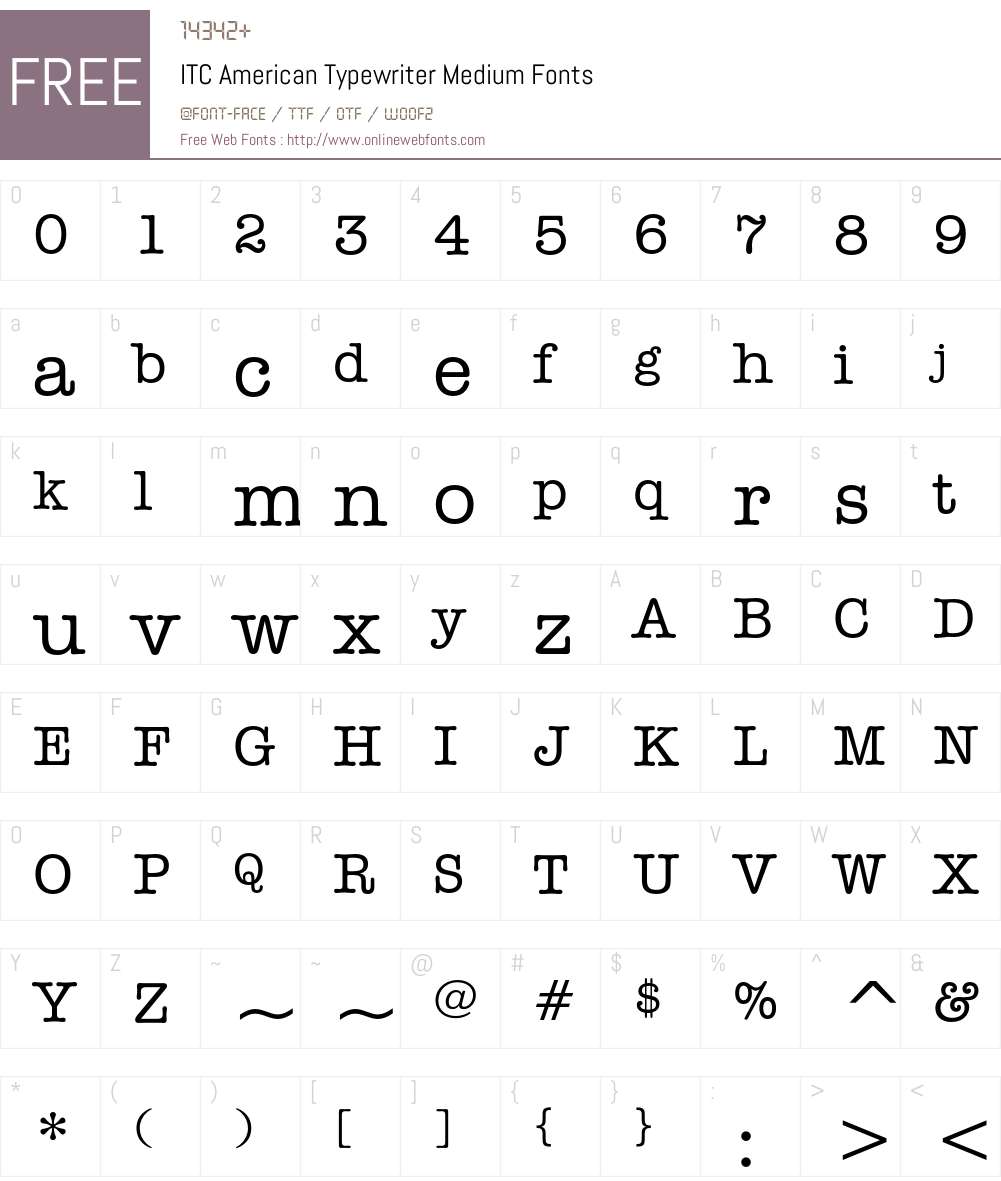
There was a time when American Typewriter was the height of sophistication, a way of saying both “intellectual” and “pop”. It’s a bit like flared trousers: you only need to do it once. I’m not sure we have a trend yet, but the meme is loose.Īs a first-time enthusiast for American Typewriter, I was happy to see it pass into history. Is the face’s roundness, softness and unthreatening air of friendliness a factor? The other day I saw it used for the headline on a police poster in the London Underground, advising against giving money to street people, who will only use it to buy more of the alcohol and drugs that are slowly killing them: kid gloves for a tough message. The typewriter reference must be obvious, even in the bold versions, but if you’ve never watched the letters hit the paper as you pound the keys, this must seem quaint. I suppose it looks “seventies” in a funky retro kind of way. I have no idea how it will strike someone who has never noticed it before. Check out the November/December issue of Frame, the interior architecture and design magazine, and there it is: American Typewriter cover lines, headlines, intros and body copy. Now, twenty years later, here it comes again. Eventually, though, like any typeface that comes to represent its time, over-use turned it into a cliché and out it went. In 1980, I used American Typewriter Bold on a record sleeve that I put together for a friend.Īs I now know, American Typewriter was designed in 1974 (by Joel Kaden and Tony Stan) but perhaps things moved slower back then because in the late 1970s and early 1980s it remained a highly fashionable display face.

American typewriter font license manual#
I loved the reference to manual typewriters – I’d learned to type on one. For me, learning about type, the face was the last word in coolness. The title, back cover blurb and chapter numbers were set in American Typewriter Bold. I typeset several books, including one titled The Hollywood Musical, published by the British Film Institute. I was fascinated by the differences between Times, Bodoni, Bembo, Plantin and all the rest.

American typewriter font license how to#
I already knew how to touch-type – first step, I thought, to becoming a writer – and I persuaded my employers to let me learn to use their Compugraphic photo-setting equipment. In the late 1970s, bumming around, I took a job at a company that produced books for academic publishers. I am no typophile, but there was certainly a time when I was preoccupied with type.


 0 kommentar(er)
0 kommentar(er)
